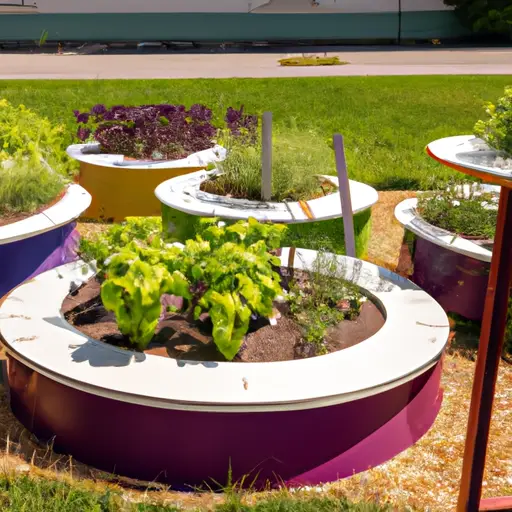Transforming Urban Spaces through Community-based Container Gardens
In the hustle and bustle of crowded cities, finding green spaces can be a challenge. The concrete jungle often offers little opportunity for individuals to connect with nature and enjoy the beauty of plants and flowers. However, in recent years, a growing trend has emerged – the transformation of urban spaces through community-based container gardens.
Container gardening is a simple concept that involves growing plants in containers instead of traditional garden beds. This practice has gained popularity in urban areas due to limited space and lack of suitable soil for gardening. By utilizing containers such as pots, barrels, or even repurposed materials like old tires or milk crates, individuals can create beautiful gardens in their own small spaces.
What makes community-based container gardens unique is the collaborative effort involved. Instead of individual gardeners tending to their own plants, multiple people come together to create and maintain a shared garden space. Residents, local organizations, and businesses all contribute their time and resources to turn neglected areas into vibrant green oases.
The benefits of community-based container gardens are numerous. Firstly, these gardens provide much-needed greenery in otherwise gray urban landscapes. By adding pops of color and natural elements like flowers, herbs, vegetables, or even small trees, container gardens bring life back into forgotten corners.
Moreover, these gardens serve as valuable communal spaces where people can come together to socialize and connect with one another. In densely populated neighborhoods where open parks may be scarce, gathering around community gardens fosters a sense of belonging and unity among residents who may otherwise remain strangers.
Additionally, community-based container gardens offer educational opportunities for children and adults alike. Participating in the creation and maintenance of these urban green spaces allows individuals to learn about gardening techniques, plant care, composting practices, and sustainable living. Schools can incorporate these gardens into their curricula to teach students about biology or environmental studies while providing hands-on experience.
Furthermore, these gardens promote environmental sustainability in urban areas. Container gardens utilize less water compared to traditional garden beds, as the soil in containers tends to retain moisture more effectively. Additionally, they reduce the heat island effect by absorbing sunlight that would otherwise be reflected off concrete surfaces. They also improve air quality by absorbing pollutants and producing oxygen, thus creating a healthier living environment for residents.
While community-based container gardens offer numerous benefits, their success relies heavily on the commitment and active involvement of community members. Regular care and maintenance of plants are vital to ensure the longevity and beauty of these green spaces. To achieve this, residents can organize gardening clubs or volunteer schedules to distribute responsibilities among participants.
In conclusion, community-based container gardens have the power to transform urban spaces, breathing life into concrete jungles and creating interconnected communities in the process. By reimagining neglected areas as shared green spaces, residents can cultivate a sense of pride in their neighborhoods while enjoying the beauty and benefits that gardens bring. These gardens not only beautify our cities but also offer educational opportunities and promote sustainable living practices. So let us come together, with shovels in hand and seeds in our hearts, to transform our urban landscapes into thriving havens through community-based container gardens.














